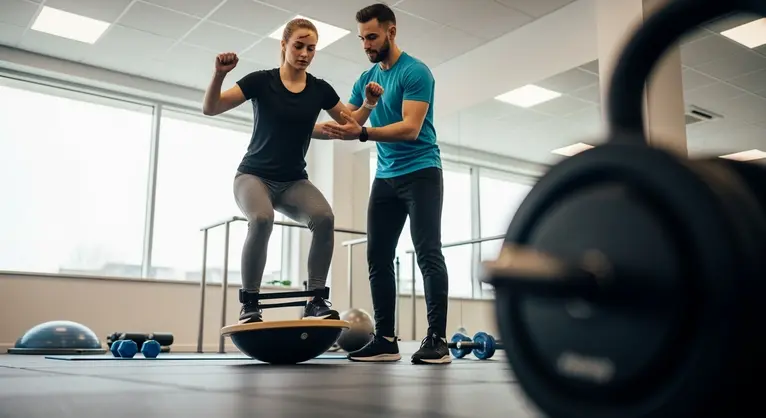In the world of sports and fitness, concussions are often misunderstood and underestimated. But whether you’re a weekend warrior, a competitive athlete, or just starting out, understanding how to manage a concussion is vital for your long-term health—and your ability to keep doing what you love. Let’s unpack the latest, expert-backed strategies for prevention, management, and motivated recovery.
Understanding Concussion: Fast Facts for Every Athlete
A concussion is a type of mild traumatic brain injury caused by a direct blow or sudden jolt to the head. While helmets and mouthguards help reduce risk, no equipment makes you completely immune. In fact, concussions are among the most common injuries in sports like football, hockey, and soccer.
Why does this matter? Concussions are more than “just a bump”—they impact your brain’s health, your moods, and your game. Early recognition and proper management mean faster, safer returns to your team, gym, or training routine.
Prevention: Your First Line of Defense
Gear Up—But Don’t Rely Solely on Equipment
- Helmets and mouthguards reduce concussion risk (mouthguards cut risk by up to 28% in youth hockey), but remember: no helmet or guard is concussion-proof.
- Always use equipment that fits snugly and is sport-specific.
Train Smart for Safety
- Rule changes work! Reducing body checking in youth sports lowers concussion rates by over 50%. Limiting contact drills in football decreases risk as well.
- Neck strength matters: Strong neck muscles absorb impact forces, providing added protection.
- Sharpen reaction and vision: Quick reflexes can help you avoid dangerous collisions.
These aren’t just rules for kids—every athlete, regardless of age or skill, benefits from safer strategies.
If a Concussion Happens: Immediate Steps to Take
Know the Warning Signs
Concussion symptoms may appear right away or develop over hours. Watch for:
- Headache, dizziness, confusion, or blurry vision
- Nausea or vomiting
- Sensitivity to light/noise
- Unusual mood or behavior
Take Action
- Remove from play, immediately. No athlete should return to their activity the same day a concussion is suspected.
- Monitor for worsening signs: repeated vomiting, severe headaches, or dramatic behavioral changes mean it’s time for urgent medical help.
- Only a qualified healthcare provider should clear an athlete for return to activity.
Recovery Done Right: Stepwise Rehab & Return to Play
Rethinking “Rest”
Gone are the days of isolating in a dark room for weeks. Modern science supports symptom-limited activity and a phased approach.
Stepwise Plan for Safe Recovery
- First 24-48 hours: Take it easy, both mentally and physically—but don’t go stir-crazy. Gentle walks and light mental tasks (if tolerated) are encouraged.
- After 2 days: Gradually add light aerobic exercise (walking, stationary bike) as long as symptoms don’t worsen.
- Over 1-2 weeks: Carefully resume schoolwork, chores, or non-contact activities. Stop if you experience symptoms.
- 2-4 weeks: Build up to sport-specific drills (still no contact).
- Return to full play: Only with medical clearance after a successful, symptom-free progression.
Nutrition for Brain Health
While there’s no magic food for concussions, focus on recovery basics:
- Hydrate well.
- Eat protein, healthy fats (especially omega-3s), and antioxidant-rich fruits and veggies.
- Avoid alcohol and recreational drugs—they hinder healing.
For more on antioxidants and how they support the healing process, check out our detailed insights on antioxidants in sports nutrition.
Tools, Support & Psychological Recovery
Build Your Comeback Team
- Coaches and trainers keep you on protocol and spot setbacks early.
- Family and friends provide encouragement—don’t go it alone!
- If you feel down, anxious, or overly frustrated, consider reaching out to a sports psychologist; moods can be affected by concussion, and support speeds recovery.
Stay Motivated
Set small, daily goals: walking a little further, reading a chapter, or spending time outside. Track your progress—they’re all wins! Remember, most concussions improve within weeks when handled the right way.
Conclusion: Trust the Process, Stay Strong
Managing a concussion isn’t about sitting on the sidelines forever—it’s about coming back safe, strong, and ready for peak performance. By taking brain health seriously, you’re investing in every session, game, or adventure still ahead. Listen to your body, seek support, and trust the process. The gym, the field, and your future self will thank you.
Ready to learn more? Stay connected with Gympulse Club for expert insights, recovery tips, and motivation for every step of your fitness journey.

